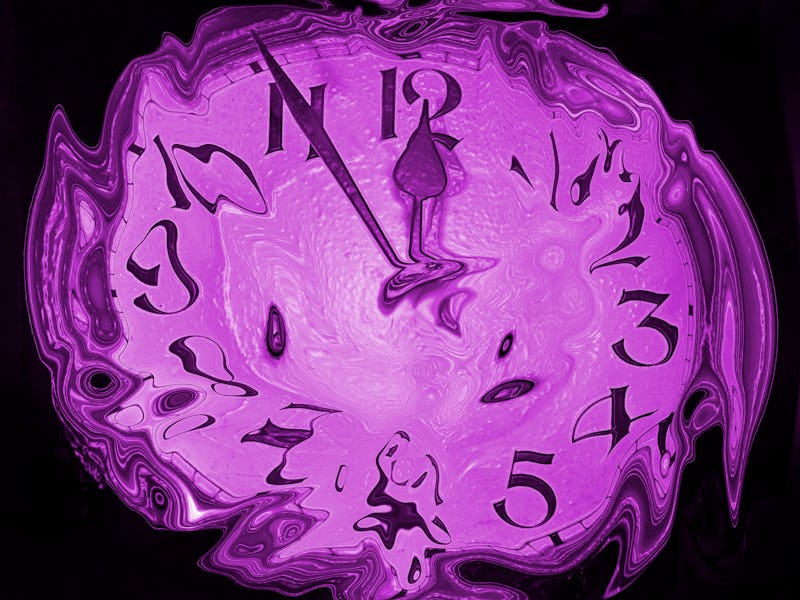Doomsday clock update: This is how close the world is to catastrophe
"We now face a true emergency – an absolutely unacceptable state of world affairs that has eliminated any margin for error or further delay."

We have bad news: Humanity is inching closer and closer to its doom.
That's the upshot from the Bulletin of Atomic Scientists, a group of experts who routinely assess the state of the world and how close humans are to extinction. On Thursday, the group moved the seconds hand of the 2020 Doomsday Clock forward by 20 seconds — from a full two minutes to midnight to just 100 seconds.
The clock is reset every year to indicate how close humanity is to its own demise, given global threats to security and the environment. Set up in 1947, this is the first time in its history that it has been set below the two-minute mark.
“The world has entered into a realm of a two-minute warning,” Rachel Bronson, president and CEO of the Bulletin of the Atomic Scientists said at a press conference. “Danger is high and the margin for error is low.”
To provide some context as to just how bad our current situation is, the clock was further from midnight at the start of the Cold War, when it stood 7 minutes to midnight.
The top three threats to humanity today may come as no surprise:
- Climate change
- Nuclear weapons
- Information warfare
A new low
In 2018, the clock was set to two minutes to midnight — its closest to midnight since 1953, when American and Soviet powers tested thermonuclear weapons for the first time — and remained in the same place in 2019.
“Today, we feel no more optimistic,” Bronson said. It would be an “honor” to move the clock back, Bronson said, but situation doesn’t call for that.
Following the announcement, Robert Rosner, chair of the science and security board for the Bulletin of the Atomic Scientists, reflected on what makes 2020 stand apart from the past. The problem, he said, is that “the new abnormal” has only persisted.
“We have indeed normalized a very dangerous world,” Rosner says. Chief among the threats to humanity are climate change and nuclear weapons, he said.
It is easy to understand why these two threats stand out: The Iran nuclear deal’s potential demise and repeated threats of missile tests and launches from states like North Korea can't be ignored, the experts say.
Sivan Kartha, a member of the Bulletin’s science and security board, says climate change has become an ever-greater threat to humanity since the clock started ticking. Back in the earliest days of the Doomsday Clock, the sole consideration for setting the clock was nuclear threats, he said. At the time, human-driven climate change was “mere academic curiosity.”
Now, global warming has significantly raised global temperatures — recent reports from NASA and the National Oceanic and Atmospheric Administration found that the past decade was the warmest ever recorded. The 2020s are likely to follow the trend.
“To test the limits of earth’s habitable temperature is madness,” Kartha said — similar to the madness of flirting with the power of nuclear weapons.
Modern threats for a modern world
Compounding these two threats is "cyber-enabled information warfare" between and within countries, according to Robert Latiff, another member of the Bulletin’s science and security board. Artificial intelligence, hypersonic weapons, and biological threats have created a "witches' brew" for global conflict, he says. Cries of "fake news" spread misinformation and have "made worse an already dangerous situation," he says.
Former UN Secretary-General Ban Ki-moon, now chair of an affiliate organization called The Elders, said world leaders have a joint responsibility to address the three major threats affecting the globe. Nuclear proliferation has put us in an "unpredictable and highly dangerous" situation, he said during the press conference, which calls for "global leadership." But we've seen "precisely the opposite" of that, Ban said.
A step forward would be for world leaders to craft a plan to reach net-zero emissions by 2050, Ban said. "We will only overcome these existential threats by working together," he said. "I believe there is an opportunity for this in this coming year."
How best to get people to “wake up” to major threats in the world remains a challenge, former California Governor Jerry Brown said. But even talking about issues like climate change is still “deviant."
“We are truly in a dangerous moment but you would never know that,” Brown said. “We’re not supposed to utter the truth about the power of mankind to destroy itself.”
Science is being ignored, denied, and belittled, but we still have an “incredible opportunity” to turn things around, he said.
“The world is not over,” Brown said. “We can still pull back from the brink.”